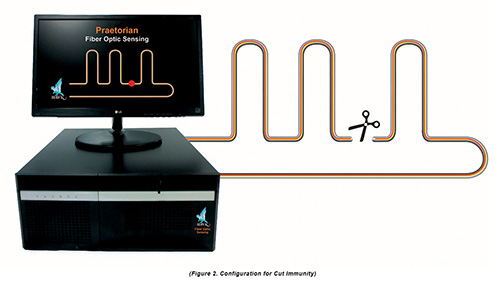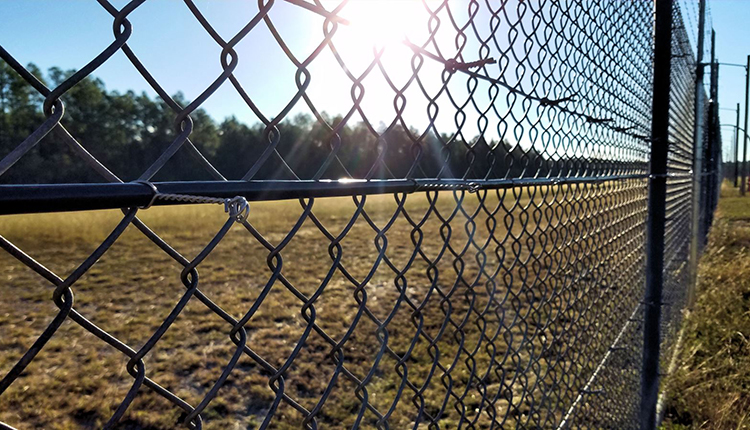The Role of Fiber Security in Enhancing Your Cyber and Physical Security Network
The Role of Fiber Security in Enhancing Your Cyber and Physical Security Network
Blog Article
The Ultimate Overview to Fiber Optic Safety And Security Systems for Your Business
In a period where safety worries are critical for businesses, recognizing the ins and outs of fiber optic innovation can be transformative. This guide lays out how incorporating fiber optic security systems not only enhances data protection however additionally offers advantages like resistance to interference and real-time monitoring capabilities.
Recognizing Fiber Optic Innovation

The core of a fiber optic cord consists of a thin glass or plastic center, bordered by a cladding layer that mirrors light back right into the core. Single-mode fibers are made for long-distance transmission, while multi-mode fibers are suitable for much shorter distances, frequently used within structures.
Fiber optics are not just much faster however also more protected than standard wiring. Their integral resistance to electromagnetic disturbance and the trouble of tapping right into the signal without detection make them a recommended option for organizations focusing on data honesty and security. As organizations progressively depend on secure and efficient interaction systems, comprehending fiber optic modern technology ends up being essential for educated decision-making.
Key Benefits of Fiber Optic Protection
When considering security alternatives for an organization, the benefits of fiber optic systems are particularly compelling. Fiber optic technology provides extraordinary information transmission speeds and bandwidth capability, making it ideal for managing high-resolution video clip feeds from surveillance cameras. This capacity ensures that safety and security workers obtain real-time information, enhancing total feedback times to possible security risks.
In addition, fiber optic cords are naturally resistant to electro-magnetic interference, which can endanger the stability of conventional copper-based systems. This resistance guarantees that the information sent remains protected and undisturbed, offering a much more reliable protection infrastructure. Additionally, fiber optics are less prone to physical damage, as they are made from glass instead of metal, lowering upkeep costs and downtime.
Fiber optic systems supply improved cybersecurity functions, consisting of file encryption capabilities that safeguard delicate data from unapproved accessibility. Collectively, these advantages make fiber optic protection systems a durable choice for organizations looking for to enhance their protection procedures.
Installment Process and Considerations
Taking into consideration the intricacies included, the installation procedure of fiber optic protection systems requires mindful planning and execution. The first step entails a detailed site assessment to recognize optimum places for cabling and tools. This analysis ought to think about ecological aspects, existing framework, and possible vulnerabilities.

In addition, the installment has to follow neighborhood building codes and industry requirements. This might include collaborating with various stakeholders such as structure supervisors, IT groups, and safety employees to make certain seamless assimilation with existing systems.
Post-installation, extensive testing is necessary to verify system performance and determine any type of issues that may develop. By prioritizing these considerations during the setup procedure, businesses can make certain a robust and reliable fiber optic security system that meets their specific protection requirements.
Newest Developments in Fiber Optic Security
Recent innovations in fiber optic innovation have actually dramatically boosted the capabilities of protection systems for services. One of one of the most noteworthy technologies is the integration of fiber optic sensing units that can find resonances and intrusions along the boundary of a center. These sensors provide real-time tracking, making it possible for quick response to possible breaches.
In addition, the development of distributed fiber optic sensing technology enables the continuous tracking of large locations with a single fiber cable television. This approach not only minimizes installment expenses but also enhances the integrity of keeping track of systems by eliminating the requirement for multiple, separate sensing units.
In addition, innovations in multiplexing strategies have made it possible for businesses to transmit substantial amounts of data over fiber optic networks, improving the capabilities of video clip monitoring systems. High-def video clip feeds can now be sent out over cross countries without loss of high quality, making certain that safety workers have access to clear and actionable info.
Finally, making use of synthetic knowledge (AI) along with fiber optic systems is revolutionizing threat discovery. AI formulas can analyze data from fiber optic networks to determine unusual patterns or actions, enabling proactive safety actions. These innovations collectively represent a considerable leap onward in fiber optic protection modern technology.
Picking the Right System for Your Organization
Choosing the ideal fiber optic safety system for your index service is essential for making sure optimum protection and comfort. To make an educated option, evaluate your specific safety demands, thinking about elements such as the size of your facilities, the nature of your procedures, and prospective susceptabilities.
Begin by examining the degree of security needed; for example, high-risk settings may require advanced systems with incorporated monitoring and breach discovery abilities. Next off, take into consideration scalability; as your service grows, your protection system should be qualified of broadening to accommodate enhanced demands without substantial overhauls.
In addition, explore the dependability and performance of various systems. Seek service providers with well established online reputations and client reviews that vouch for their service quality. It's also recommended to ask about the modern technology's compatibility with existing facilities, guaranteeing a smooth combination procedure.
Conclusion
In final thought, fiber optic safety systems present a robust solution for improving organization security infrastructures. The assimilation of high-speed data transmission, resistance to electromagnetic disturbance, and advanced surveillance abilities dramatically enhances overall security (fiber optic security system). By comprehending the technology, acknowledging its advantages, and thinking about the setup procedure, companies can make enlightened decisions. The most current technologies even more strengthen the efficiency of these systems, making certain that companies remain safe and adaptable in an ever-evolving risk landscape.
Report this page